NOVEMBER MACRO MATTERS
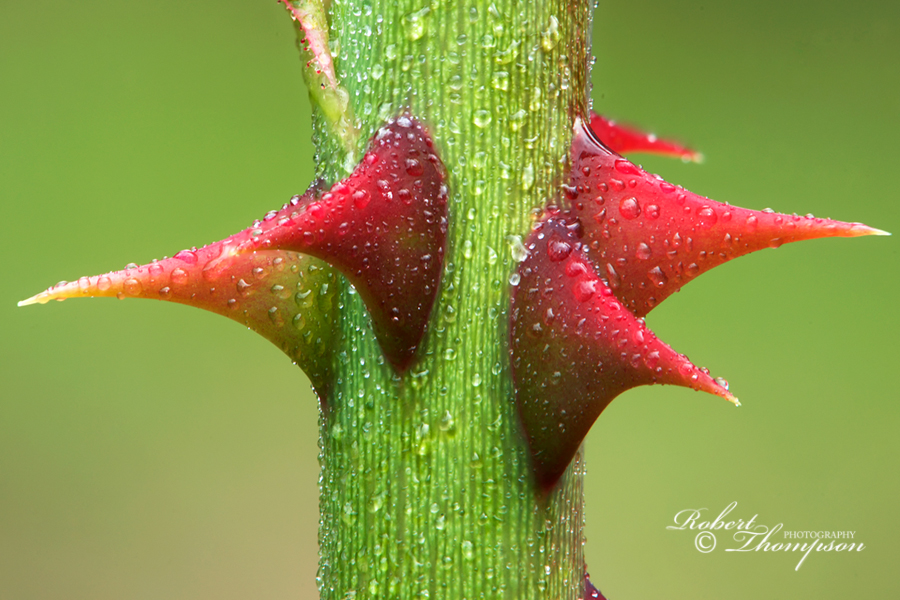
Wild Rose Thorns
Sometimes when walking about certain things stand out as in this case. I was running a workshop in the Var in Southern France and it had been raining a lot. I was drawn to the bright thorns on the wild rose which were deep red and covered in raindrops.
It never ceases to amaze me just how diverse and complex the natural world is. The more I see and engage with it, the more I realise how insignificant my knowledge and understanding of its complexity is. The world below our feet is equally mesmerising, and the photographic possibilities, here are literally endless. Many photographers, however, see only the ‘Big Picture’ and in doing so miss the beauty and diversity that it has to offer. Nature’s grand designs are all around us. However, being technically component with your camera is only one aspect of the process; observation and the ability to look beyond the familiar and to recognise colour, shape and form requires an experienced eye. This comes with practice and getting into the routine of not only seeing the subject in its entireness but looking for and recognising patterns and repetition within it. Patterns become apparent when, shapes, colours and lines repeat within a scene. However, we tend out of habit to focus on the subject often oblivious of the textures and shapes, which in their own right make for interesting photographic studies.
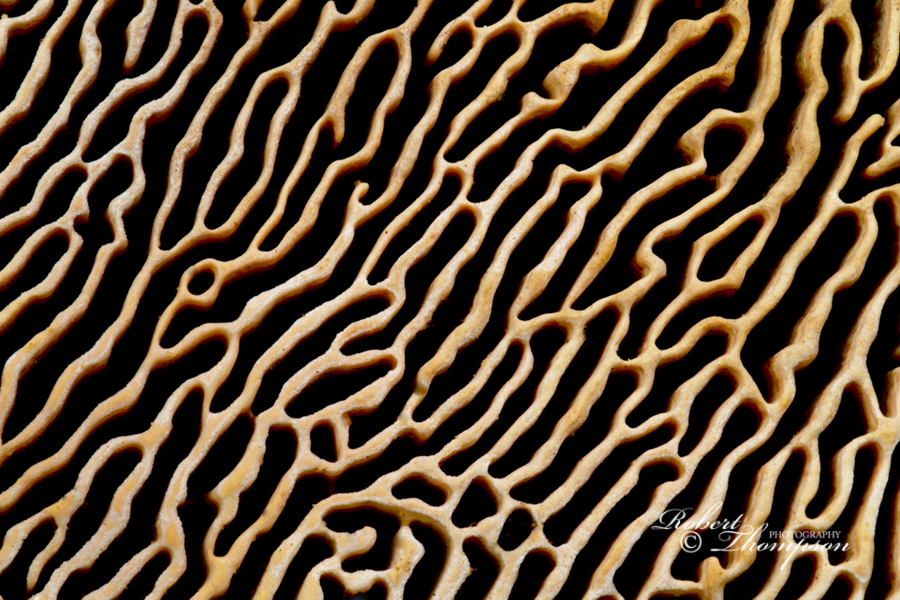
Daedaleopsis confragosa Fungal Gills
Most photographers tend to look at the visible side of fungi without realising that the underside has many different types of gill formations. Some make interesting repetitive patterns as in this case.
Patterns exist everywhere in nature; they may be obvious in some subjects but subtle in others. Inherent patterns are perhaps the most apparent, for example, the scales on the wing of a butterfly or moth, the colour and structure of bark, spider’s webs, stones on a beach, and the arrangement of feathers on a bird, to name but a few. Other subjects which display patterns and are equally worth exploring are, lichens, fungi, mosses and flowers; the wing structure of insects have interesting colours, textures, and shapes; all are capable of providing endless photographic opportunities.
When you become familiar with patterns, you begin to see them everywhere; this is especially true when working in close-up. Pictures that depict strong graphic content are generally more appealing than cluttered images that convey little to the viewer other than confusion. The rules of composition also apply equally in close-up and careful attention to natural focal points is just as important. Reducing an image to its basic components is a useful discipline that often helps to focus the mind directly on the subject.
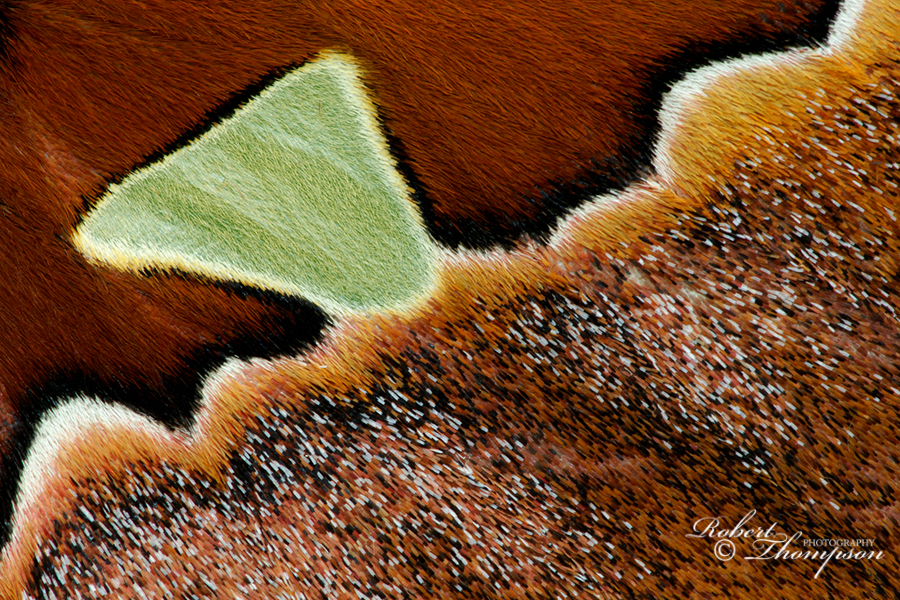
Rothschildia triloba forewing window
Saturniidae are a large, highly colourful family of moths with striking wing patterns. Isolating in close-up the patterns create interesting abstracts.

Sand patterns
Sand patterns come in many different patterns. A heavy overnight frost produced the bluish pattern among the ripples producing this unusual abstract.
Abstract macro photography is about the exploration of the components that make up the structure of a subject and when viewed in close-up, often conceals its identity, but not necessarily in every case. It is also about breaking the rules, focusing one’s attention on a specific component, or multiple parts including colour and texture in an attempt to inhibit recognition. There are several key elements that are fundamental to creating interesting abstracts. Shape defines the visual structure in an image; it is one of the main component parts and must be pleasing to the eye. It can also make or break the overall balance of a photograph depending on how it’s placed within the frame. Colour is also a key element; especially those that complement each other and are important in terms of holding the viewer’s attention. Lines, if present, will often define the artistic element to the overall composition. Diagonal lines are generally more visually pleasing to the eye, and you should, whenever possible, seek these out which may mean rotating the camera between formats to achieve this. Repetitive lines may form a pattern and therefore, indicate predictability within the photograph.

Pheasant Phasianus colchicus forewing feathers
Many animals and birds, unfortunately, meet their death on the roads every year. Travelling back late afternoon from a commission I saw this beautiful cock pheasant lying on the grassy verge at the edge of the road. It had been struck probably by a car. It was almost flawless and the feathers were still in wonderful condition. I took several abstract images and was pleased with most of them.
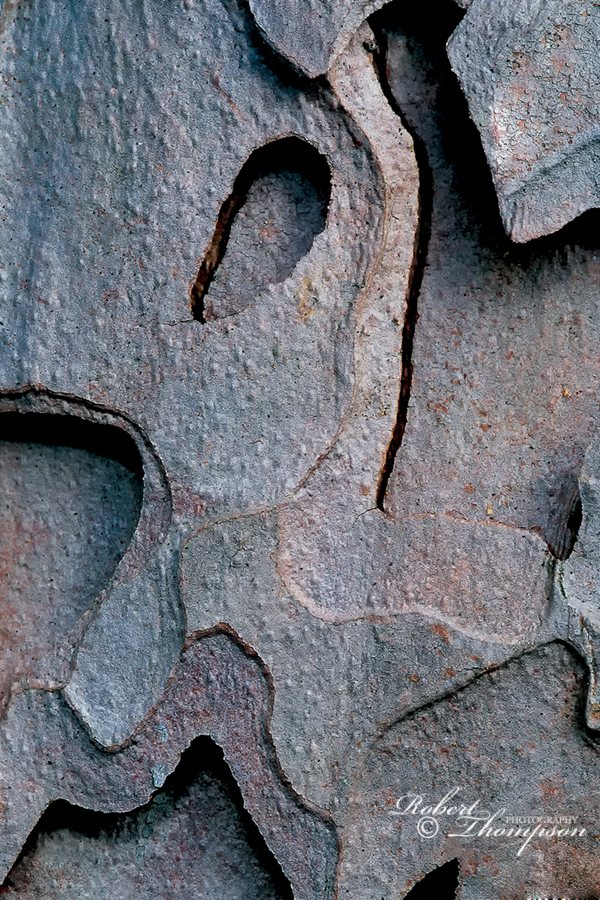
Dead Pine Bark
I came across this lone-standing decaying pine trunk in the middle of a bog some time ago. The bark was rotten on most of it and peeling off in places. I was looking for abstracts to illustrate an earlier photography book and spent a little time exploring various shapes and patterns on what was left. Don’t neglect the bark on different tree trunks you’ll be amazed at what you can find if you spend the time.
The most successful abstract compositions are usually simple in design but have a strong visual quality that may baffle, or intrigue the viewer. Describing what defines an abstract is a difficult question to answer. There are many opinions on the subject and no universal consensus that I have come across. The success of abstracts, in my opinion, is largely down to presenting the familiar in an unfamiliar way. An interpretation may focus on a small section of a subject, which highlights its shape, colour or texture, but light, lens selection, perspective and a discerning eye will determine the look of the final photograph. You don’t need elaborate equipment to capture patterns or abstracts; a macro lens is an advantage, but not a necessity. Extension tubes and a tripod capable of operating at ground level along with an electronic cable release will, in the majority of situations, be all that you will need. An abundance of subject material exists around us, but it takes time and practice to evaluate its potential from an abstract viewpoint.
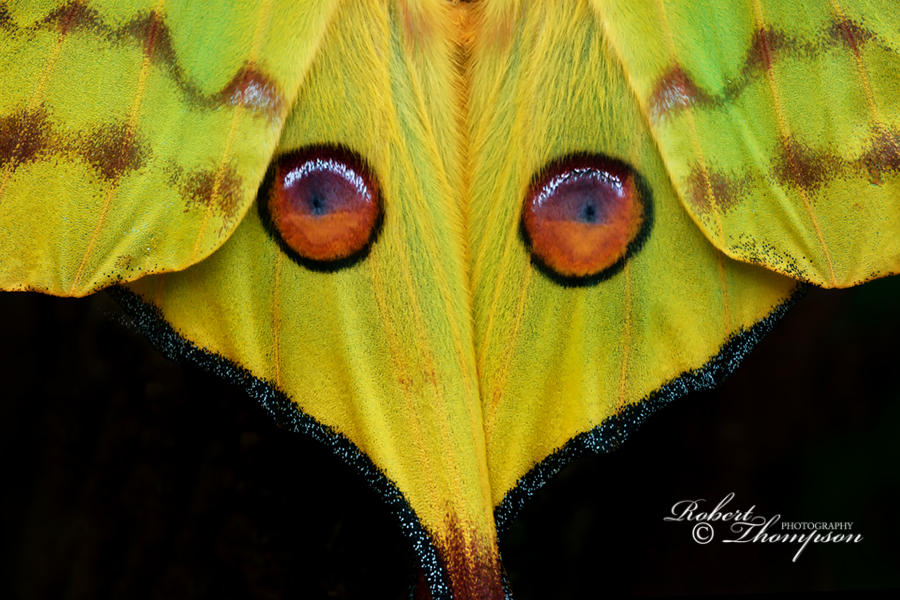
Comet Moth Argema mitteri eyespot
It’s hard not to be captivated by the beautiful colours and eyespots that some moths have. Isolating the hindwing eyespots and including a small section of the long tails created a face that appears to be staring right. back at you!

Oak Bracket Fungus Inototus dryadeus
It always pays to explore subjects thoroughly as there is often an abstract or another aspect that makes for an interesting image. The Oak Bracket is a large conspicuous fungus that occurs on the trunks of oak and occasionally some other trees. The interesting thing about this fungus is the pores weep a brown sticky resin which when viewed in close-up makes for an interesting abstract. This is a high-magnification image photographed with Novoflex bellows on a focusing rail.
The winter months are an ideal time to experiment with your camera, there are fewer distractions from other subjects to monopolise your time. It also prevents you from going off the boil and entering periodic hibernation as many photographers often do during this time. Inactivity does affect your skill level so, if you want to stay on top of your game, you need to keep your hand in at this time of the year. There is no shortage of material out there all that is needed is a camera and a creative imagination. After all, photographs themselves are simply abstracts from the big picture itself.

